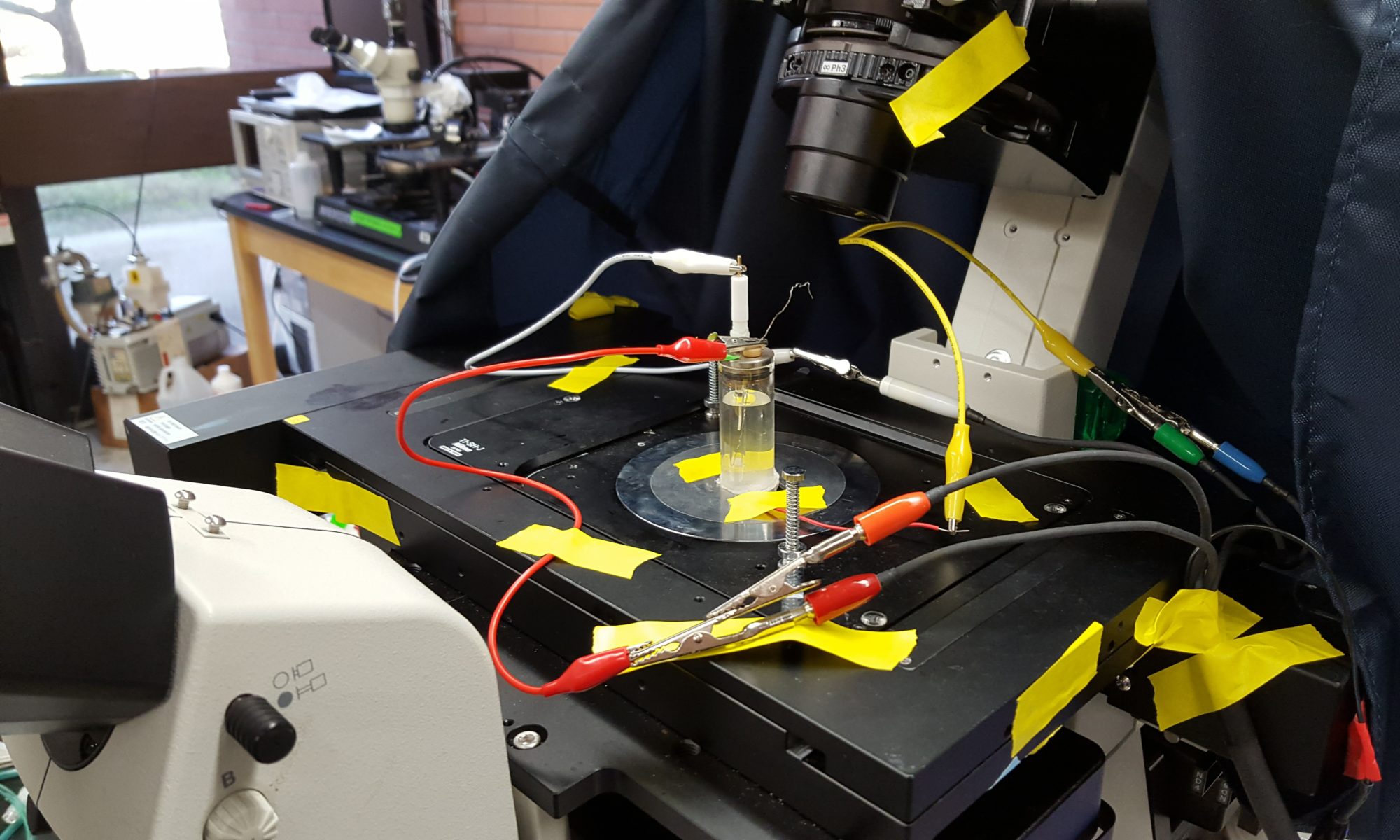Rock eating microbes from marine sediments isolated from electrodes

Electrons, it’s what’s for dinner…
We know from work in the 1980’s that microbes can breathe mineral (use them as an electron sink), and that these microbe-mineral interactions are the cornerstone of Geomicrobiology. However, the converse process—how microbes eat mineral (use them as an electron source)—is a process that we know almost nothing about. We know that there are microbes that utilize inorganic (non-carbon) electron sources (i.e., hydrogen, sulfide, iron), however most of what we know stems from dissolved rather than solid forms. While there are a lot of good reasons for this, one of them being that these organisms are difficult to culture in the lab, I set out to correct this by culturing microbes that could utilize solid mineral and electrodes as electron sources. I started with electrodes and in the process developed techniques and protocols for electrocultivation. Now I’m working on figuring out how these microbes do what they do—perform extracellular electron transfer from a solid source, taking those electrons and using them to conserve energy. This is now a main focus in my research group, where we utilize high through put genetic techniques (TN-seq) to figure out the genes involve that we will ultimately characterize.

The ground work published in Frontiers in Microbiology: Rowe et al., 2015
Our first characterization of a TN-seq study from Thioclava by Josh Sackett also just out in Frontiers. (Sackett et al. 2022)
Astrobiology, Bioremediation, Electromicrobiology, Environmental Microbiology, Geomicrobiology, and Microbial Ecology.
